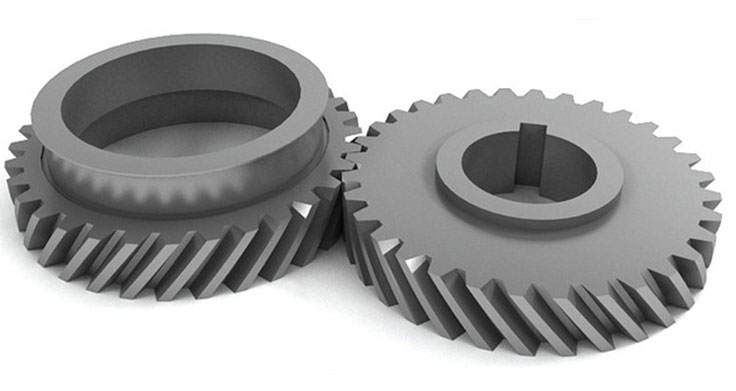
Optimizing gearboxes with helical gears can significantly improve performance and reliability in various industrial applications. Helical gears offer several advantages that contribute to enhanced gearbox performance and durability. Here are the key aspects of gearbox optimization with helical gears:
1. Efficiency Improvement:
Helical gears provide smooth and continuous tooth engagement, resulting in reduced friction and improved power transmission efficiency compared to spur gears. The gradual contact between teeth minimizes impact and sliding losses, reducing energy wastage and heat generation within the gearbox.
2. Load Distribution:
The helix angle in helical gears allows multiple gear teeth to be in contact simultaneously, distributing the transmitted load across a larger surface area. This leads to improved load-carrying capacity and higher torque transmission capability.
3. Noise Reduction:
While helical gears are generally quieter than spur gears, further noise reduction can be achieved through optimization techniques. Profile modifications, such as lead crowning and tip relief, can help minimize gear noise and vibration.
4. Gear Ratio Flexibility:
Helical gears can achieve a wide range of gear ratios, making them suitable for various gearbox applications. The ability to customize gear ratios allows gearboxes to meet specific torque and speed requirements for different industrial processes.
5. Compact Design:
Helical gears can be designed with a smaller number of teeth compared to spur gears, enabling the creation of more compact gearboxes without compromising torque capacity.
6. Durability and Reliability:
Properly designed helical gears, along with suitable material selection and heat treatment, offer enhanced durability and reliability in gearbox applications. High-quality helical gears can withstand heavy loads and operate smoothly over extended periods.
7. Improved Lubrication:
Helical gears typically require more sophisticated lubrication systems than spur gears due to the axial thrust generated during gear meshing. Optimizing the lubrication system ensures proper lubricant flow and reduces wear and friction.
8. Thermal Management:
Helical gears can experience increased heat generation due to sliding contact. Proper thermal management, such as efficient cooling systems and material selection with good thermal conductivity, helps maintain gearbox temperature within acceptable limits.
9. Finite Element Analysis (FEA):
Utilizing FEA simulations during gearbox design can help analyze stress distribution, contact patterns, and potential failure points. This aids in optimizing gear geometry and tooth profiles for maximum strength and reliability.
10. Maintenance and Inspection:
Regular gearbox maintenance and inspection are crucial to ensure optimal performance and longevity. Monitoring gear wear, lubricant condition, and alignment can help detect issues early and prevent catastrophic failures.
By considering these aspects and implementing appropriate optimization strategies, gearbox manufacturers can achieve improved performance, efficiency, and reliability in their industrial applications. Proper gear design, material selection, lubrication, and maintenance practices contribute to the successful integration of helical gears in optimized gearboxes, meeting the demands of various industries with precision and reliability.
